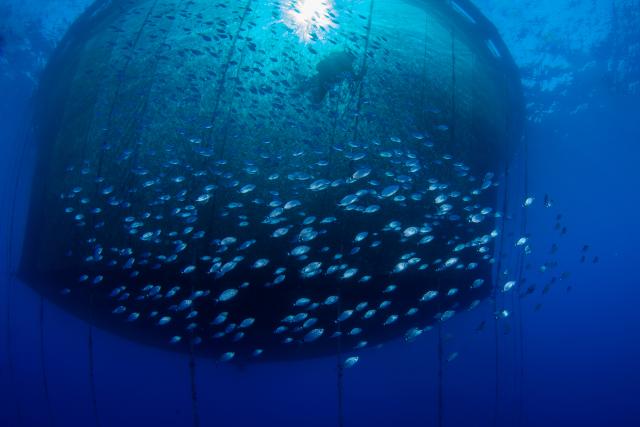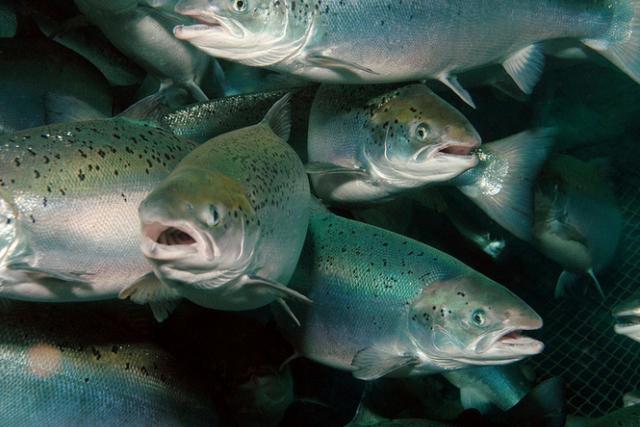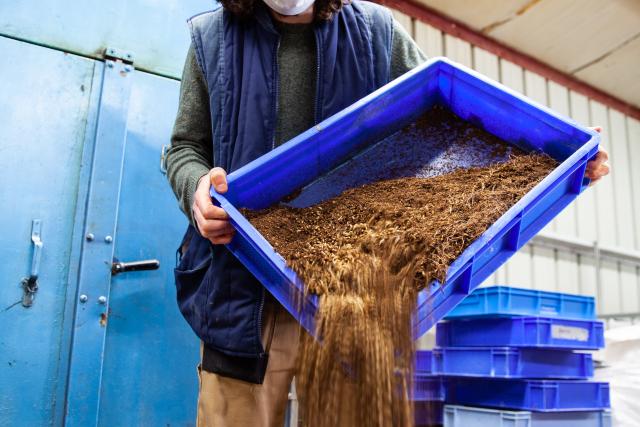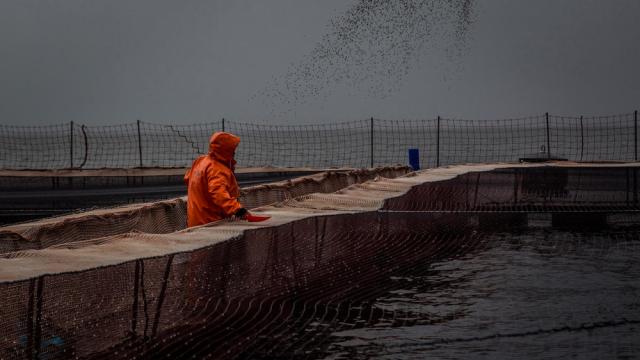
WHY IS AQUAFEED IMPORTANT?
Seafood, particularly oily fish, contains nutritious elements like omega-3 and DHA which bring health benefits to humankind. However, fish do not produce these elements – instead, they obtain them through feeding.
While wild fish can obtain these elements by foraging other small fish, farmed finfish such as salmon, kingfish, sea bass and trout must be fed with these nutritious elements in order to grow healthily. Feeds used in aquaculture, or aquafeeds, are specifically designed for individual species and their requirements at different life stages, to ensure they contain the right mix of nutritious elements.
Traditionally, aquafeed has come from wild caught fish in the form of fishmeal for protein and fish oil for other nutrition requirements. The amount of wild fish used per quantity of farmed fish produced, is called the forage fish dependency ratio (FFDR), according to the Aquaculture Stewardship Council (ASC). In the past, there has been a heavy reliance on wild capture fish, putting fish stocks at increased risk of being overfished.
Efforts have been made to reduce the FFDR in finfish aquaculture by using alternative sources of protein, such as algal oils and marine by-products. However, more must be done to reduce the pressure finfish aquaculture is placing on wild fisheries.

SHIFTING THE DIAL ON SALMON AQUAFEED
Salmon farming is one of the fastest growing food production systems in the world. But it’s having a significant impact on the environment, not least in terms of the feed that’s required.
Salmon feed can account for up to 90% of the environmental impact of production and is also linked to social and welfare issues. Salmon feed is therefore a key focus area for industry, innovation, and investment to improve environmental standards, work towards reducing greenhouse emissions and address wider socio-environmental issues.
In Spring 2021, with funding from the WWF Tesco partnership, Forum for the Future hosted an “action sprint”, bringing together industry actors, retailers and NGOs to develop a shared 2032 vision for sustainable salmon aquafeed, based on four design principles: feed diversity, circularity, social justice and environmental regeneration. A non-binding call to action was developed as part of this work, which offers a starting point for collective industry efforts to accelerate action towards sustainable salmon aquafeed.
It is clear, much more work is needed to put aquaculture – including key inputs like salmon feed – onto a sustainable footing.
Through the WWF Basket we have set a target of % farmed seafood products with FFDR (FFDRm and FFDRo)<1 and with all feed ingredients certified by ASC Feed standards or equivalent, and WWF will continue to work to drive progress across the sector towards this goal.

EXPLORING ALTERNATIVE AQUAFEEDS
Beyond working with the industry on salmon aquafeed, WWF is exploring the potential of feed innovation in aquaculture to reduce the impacts of feed production.
There are many novel feed ingredients available such as microalgae, macroalgae (seaweeds), bacteria, fungi and insects. They are all at various stages of development and many of use materials that can’t be used for food directly. But how can we scale them up so that the production costs can be reduced and these alternative materials used more widely? This is something that WWF-UK is working on.
Insects are increasingly being looked at as an alternative feed species due to their high protein content. They can be grown using by-products and left overs from food processing and other industries, without taking up much space, freshwater or fertiliser. In 2021, WWF UK released a paper on insect farming, showing that up to 20% of the UKs imported soy could be replaced by insect protein in the future.
Seaweed, or macroalgae, is farmed and wild harvested around the work. Certain seaweed species may contain oils useful for aquafeeds and in the wild many marine species would naturally graze on seaweeds. One day seaweeds could help to reduce reliance on fish oil, similarly to microalgae.
